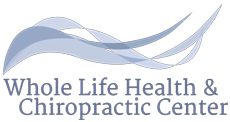Losing weight and getting into shape seem to be on just about everyone’s wish list. These are certainly good healthy goals. But how many of us give much consideration to those important structures that no one sees yet provide us the ability to conduct our daily lives. I’m talking about your bones and joints (and the muscles, tendons and ligaments that support them). Bones support our bodies and joints create function and movement. Healthy bones and joints may not make us look better but their health is paramount to our quality of life.
The issue of bone and joint health is so important and yet so ignored that the years 2000-2010 were declared the Bone and Joint Decade. One of the key goals of that initiative was to raise awareness of the increasing societal impact of musculoskeletal injuries and disorders. The cost in the U.S. alone is estimated to be $254 BILLION and is the leading cause of disability in our country. Over 35 million people, or 1 in 7, will be affected by some form of musculoskeletal problem.
There are 8 key joint areas in your body: neck, spine, shoulders, arms/elbows, hands, hips, knees, and leg/foot. Each of these areas can suffer from arthritis or other diseases or injuries. Here are some of the most common injuries.
NECK:
Whiplash is one of the most common injuries, and while usually associated with auto accidents, it can occur whenever the head is forcibly thrown forward and then backward. Symptoms include neck pain/stiffness, headaches, pain in the shoulders or low back, pain, tingling or numbness in the arm/hand, dizziness, ringing in the ears, blurred vision, difficulty sleeping/concentrating/remembering, or irritability/fatigue. If you have any sort of accident where you suspect whiplash it is important to have it checked as soon as possible. Most whiplash injuries do not show up on a regular x-ray and emergency room personnel are not trained to identify these injuries. A chiropractor is specially trained to diagnose and treat whiplash injuries.
SPINE:
Strain and sprains to the low back. These can be caused by improper sitting or lifting, over-exertion or trauma. In some cases this can lead to a bulging disk which can result in numbness, tingling, or pain down the leg. Many studies have shown chiropractic to be the best treatment for low back pain. Through adjustments and proper exercise, you can ease the pain and, in extreme cases, avoid surgery.
SHOULDERS, ELBOWS, KNEES:
Injuries to these joints are usually caused by sports activities. Those that involve overhead motion, eg. swimming, tennis, pitching cause repetitive strain on the shoulder. Tennis or golf elbow can cause pain to radiate down the arm. Tine tears in the tendons cause them to become swollen and sore. Injuries to the ligaments and cartilage are the most common form of knee injuries. ?The best prevention is to know your limits. If you start to feel discomfort, discontinue the activities for a while and put ice on the affected area. If the pain continues or increases, seek medical or chiropractic care.
HIPS:
Broken hips are actually a fracture of the leg bone just below the hip joint. Osteoporosis is the leading cause of this injury in a fall. Engage in weight bearing exercise like walking and get plenty of calcium (we recommend MCHC calcium supplements) to keep bones healthy and strong.
WRISTS/HANDS:
Repetitive motion and vibrations can lead to nerve pain known as Carpal Tunnel Syndrome. By relieving the pressure on the nerve, chiropractic can be a conservative approach to this problem , without the need for drugs or surgery.
While these injuries are caused by diverse means, there are some common ways to limit them. Keep your muscles strong, don’t overdo your activities whether they are sports or chores, make sure to get enough calcium to keep your bones strong, bend your knees when lifting or ask for help, and stop when you feel discomfort. For pain and/or swelling first try ice therapy. If that doesn’t help and you experience intense pain or pain that doesn’t subside in a couple of days, check with us for recommendations or seek medical care.








